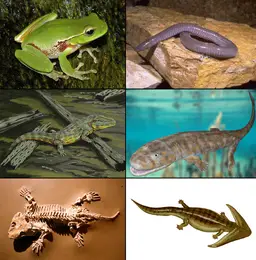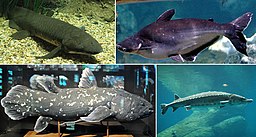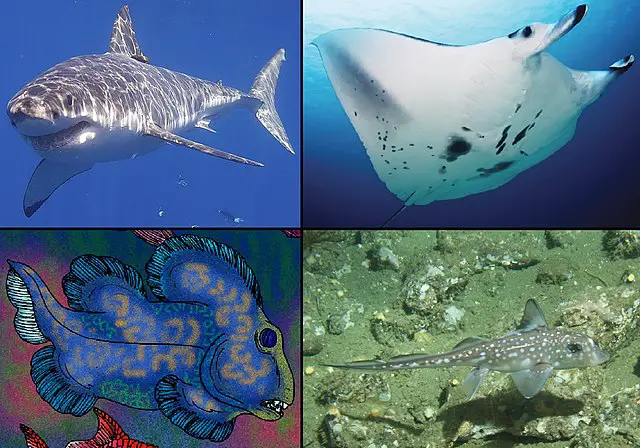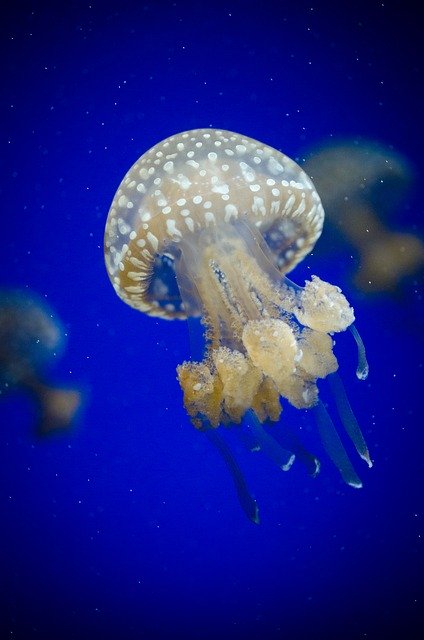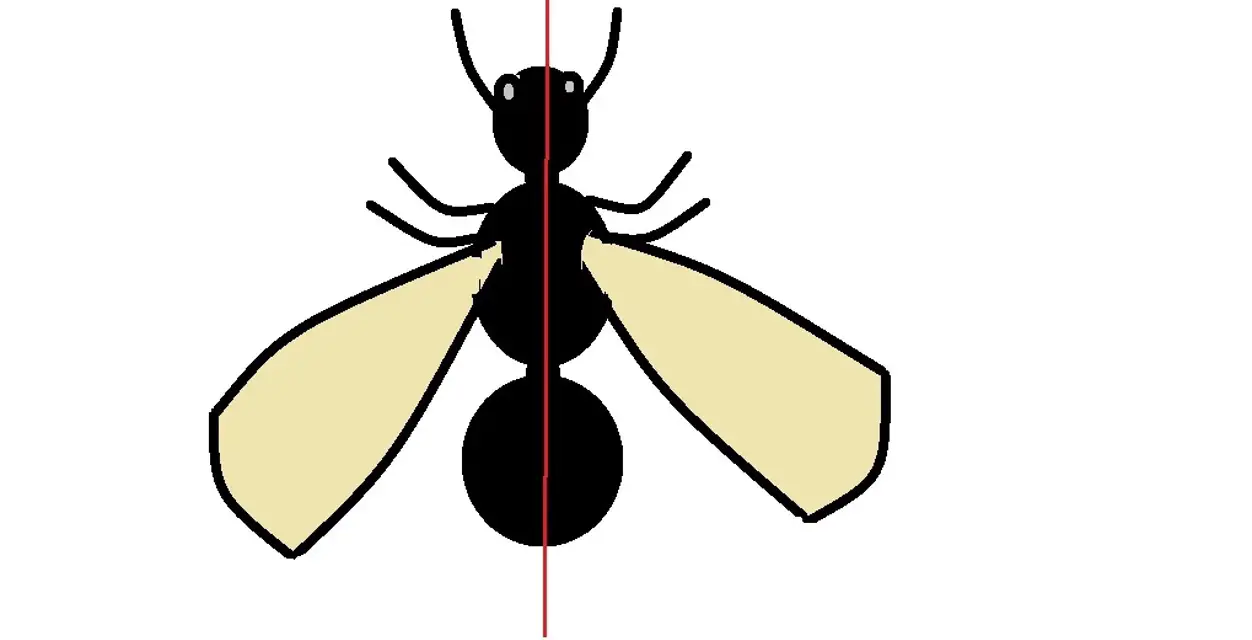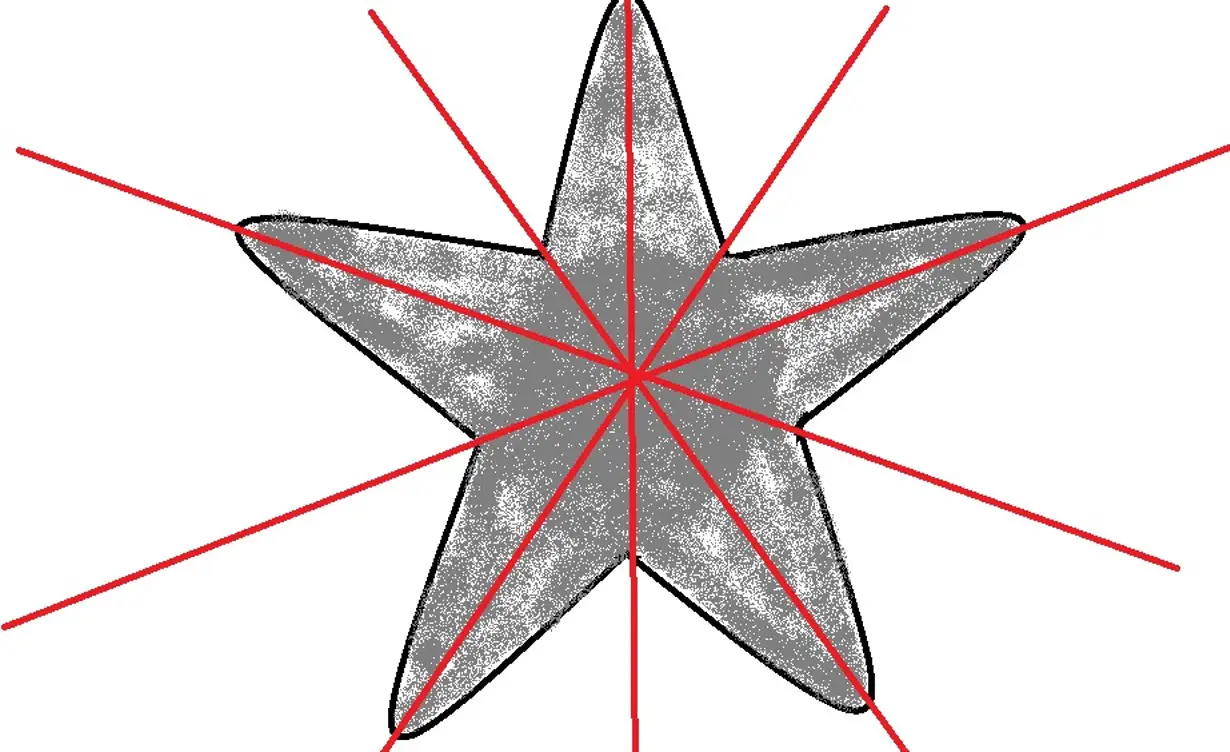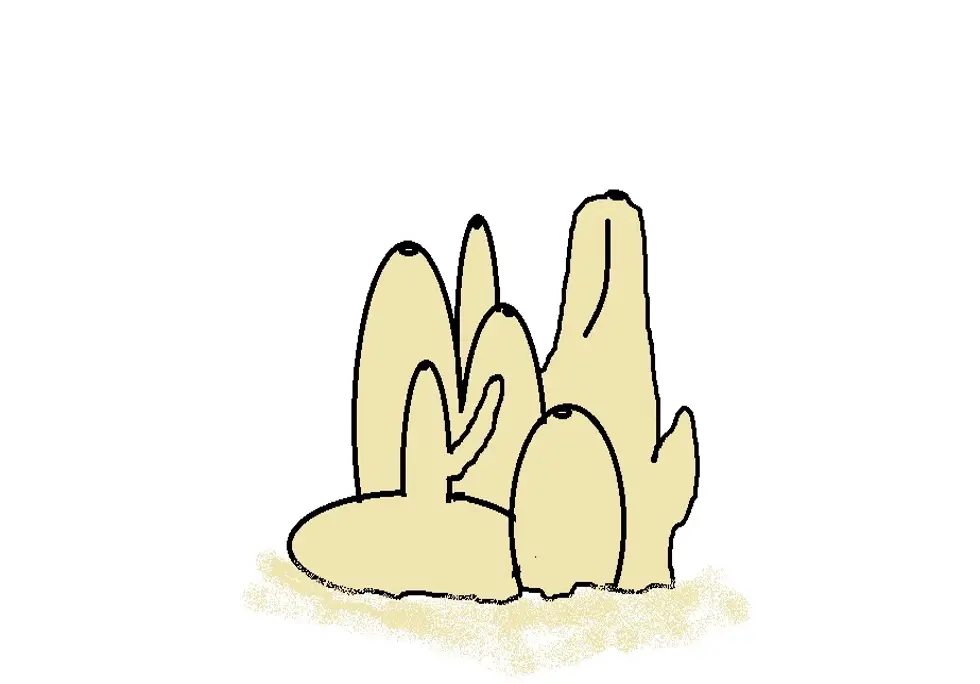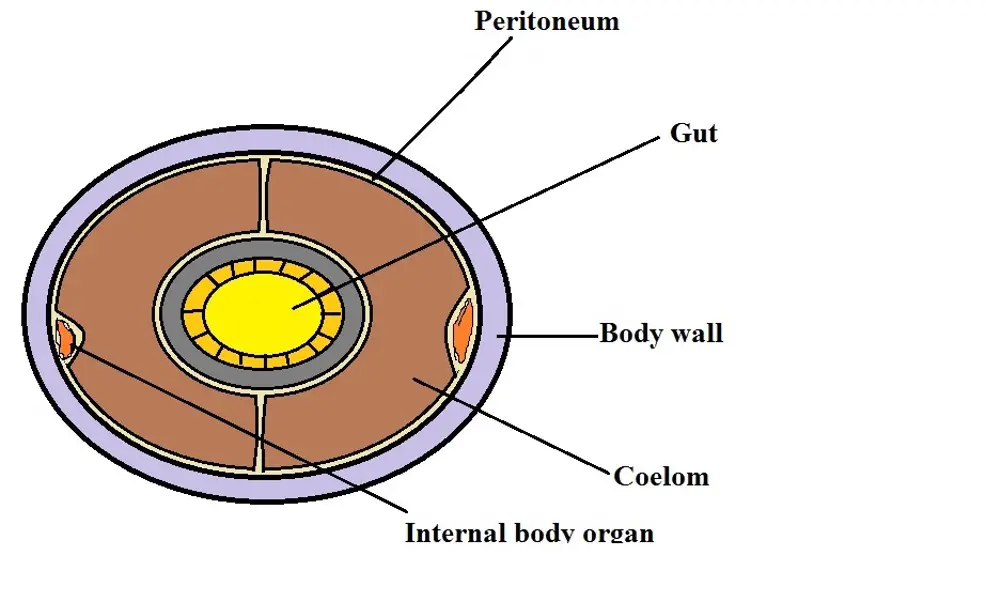Kingdom Animalia
** Different Phylum, Classification, Characteristics
Overview
The kingdom Animalia is a large group that consists of eukaryotic, multicellular organisms that are heterotrophic in nature. As such, they obtain their nutrition from external sources. Although they are unable to produce their own food, which is one of the main defining characteristics of plants, animal cells lack a cell wall that is present in plant cells.
With the exception of a few animals, the majority of animals are motile which allows them to effectively respond to stimuli and find food, etc. In general, animals are divided into two main groups namely, vertebrates (animals with a backbone) and invertebrates (animals that lack a backbone). However, they are also divided into several phyla that will be discussed below in detail.
Some examples of animals include:
- Human beings
- Cows
- Fish
- Birds
- Sponges - Invertebrate
- Lobster - Invertebrate
- Spiders - Invertebrate
- Clams - Invertebrate
Kingdom Animalia Classification
As mentioned, all animals are divided into two main categories/groups: vertebrates and invertebrates.
Vertebrates
Vertebrates include all animals classified under the subphylum Vertebrata. They belong to the phylum Chordata and possess a backbone/vertebrae (where the spinal cord is located). They are also characterized by an internal skeletal system on which muscles are attached.
Vertebrate animals are classified into seven main classes that include:
Mammalia
The majority of species are characterized by epidermal hair and the females give birth and suckle the young. However, duck-billed and spiny anteater lay eggs.
Aves/Birds - Animals that are characterized by wings, feathers, and a beak. Reproduction involves laying eggs that vary in size depending on the type of bird. Examples of birds include kiwi, emu, chicken, and woodpecker among others. Some birds have wings but cannot fly. On the other hand, some animals like bats have wings but are classified as mammals. Therefore, not all animals that fly are classified as birds.
Reptilia
Reptiles (cold-blooded) are four-legged animals and are characterized by the presence of a tail and dermal scales. For the majority of species, eggs are fertilized internally resulting in direct development of the organism. Reptile examples include turtles, snakes, and crocodiles among others.
Amphibia
Amphibians include cold-blooded animals that spend part of their lives in water. While they can absorb oxygen through their skin in a moist environment, some species (or in some stage of their life) have gills used to breathe in water. They can also breathe using lungs on land. They lay jelly-like eggs in moist environments or in water and include frogs and salamanders etc.
Agnatha
This group consists of jaw-less animals that look like fish. Some of the species like Lampreys are characterized by a large head, a notochord, and a sensory system.
Osteichthyes
Osteichthyes are true fish and are often referred to as bony fish. As such, they are characterized by bone tissue (rather than cartilage). Some of the other characteristics associated with this group include fused teeth, lobed fins, and a skull. Members of this group include clownfish and ray-finned fish among others.
Chondrichthyes
Chondrichthyes consists of organisms with a cartilaginous skeleton and are therefore known as cartilaginous fishes. While a few species have been identified in freshwater environments, the majority of species are found throughout the ocean.
* Given that vertebrate animals comprise a single phylum, they make up less than five (5) percent of all known animals.
Invertebrates
While vertebrates comprise of only one phylum, invertebrates make up the remaining phyla of the kingdom Animalia. As the name suggests, invertebrates lack a backbone and internal skeletons. Some of the species have an external skeletal system, the exoskeleton, that provides structural support. Currently, invertebrates are suggested to make up over 97 percent of all animals in the Animal kingdom.
Being such a diverse group, invertebrates are classified based on a number of characteristics including morphology/structure, symmetry and life cycle, etc.
Whereas some of the organisms have three body layers, others (primitive invertebrates) only have two body layers. Examples of invertebrate animals include insects (like spiders and ticks), snails, sea stars, sponges, and hydra, etc.
Levels of Organization
While all animals within the kingdom Animalia are multicellular organisms, they exhibit different patterns of cell organization. For this reason, they are also classified based on the level of organization of their cells.
Here, they are divided into three main levels which include:
Cellular level - The cells of animals at this level of organization form loose aggregates. While the cells of these animals (e.g. sponges) are specialized in a manner that allows them to perform different functions, cells that are similar are not organized together to form tissue.
For this reason, the bodies of these organisms are loose aggregations that consist of different types of cells. While the cells in these organisms are not necessarily organized into tissue, it's worth noting that some of the cells (e.g. pinacocytes) form layers and serve given functions.
Tissue level of organization - Animals with this level of organization have cells that perform the same functions and are arranged together to form tissue. For the majority of these organisms, the body consists of two main layers that are separated by a middle layer known as mesogloea (the middle/third layer is non-cellular).
Being diploblastic (consist of two main layers of cells), this organism consists of an outer layer known as the ectoderm, making up the epidermis, and the inner layer that lines the inner part of the body known as the endoderm (making up the gastrodermis). The body also consists of an inner body cavity.
Organ system level of organization - For organisms with this level of organization, the tissues are arranged together to form organs.
While all the cells in the organ may not perform the same functions, they are related and contribute to the purpose of the organ. Some of the organisms with this level of organization include simpler organisms like Platyhelminthes and other organisms of the higher phyla (human beings etc).
Here, organs are also connected in an organ system and function together. A good example of this is an organ system that consists of the kidneys, bladder, and the ureter forming a functional urinary system. While each of the organs has a different function, they are all involved in the removal of waste material from the body.
Symmetry
In addition to the level of organization, animals are also classified based on body symmetry (arrangement of the parts of the body around the central point).
While some of the organisms are asymmetrical, and can therefore not be divided into two equal or similar halves along the central plane, others are symmetrical where the two halves will be equal/similar when the body is divided into two parts along the central plane.
Generally, the majority of organisms at the cellular level of organization have been shown to be asymmetrical while those at the tissue/organ level of organization are either radial or bilaterally symmetrical.
For animals that exhibit bilateral symmetry (e.g. human beings, butterfly, dogs, etc), dividing the organisms into two halves from the head to the tail along the central part will result in two equal halves. Each half will be a mirror image of the other.
Several animals have radial symmetry and can, therefore, have many lines of symmetry. Because they have several parts arranged around the central point, they can be divided along several lines and be adjacent showing division resulting in halves that are mirror images of the other half.
Some of the organisms with radial symmetry include corals, sea anemones, and jelly fish among others.
Compared to animals that are characterized by bilateral symmetry, a good number of these animals (with radial symmetry) do not have bodies with distinct fronts (head parts) and ends. Rather, their bodies are mostly characterized by top and bottom sides with various important organs being located on these sides.
The mouth part of a starfish is located at the central part of the lower or bottom surface. They are commonly found in aquatic environments where they feed on food material delivered by water currents.
While a good number of animals, particularly those with a tissue or organ level of organization, are characterized by a radial or bilateral symmetry, some animals, especially those with a cellular level of organization (e.g. sponges) tend to be asymmetrical and therefore cannot be divided into two equal halves. Most of these organisms are simple with a basic body plan because the cells are not organized into tissue or organs.
Diagrammatic representation of a sponge – By looking at this image, it's evident that it cannot be divided into two equal halves. As such, it's asymmetrical.
Body Cavity/Coelom
Animals are also classified on the basis of body cavity (coelom). This cavity is normally formed during embryo development. Unlike the gut, which consists of the endoderm, the coelom is surrounded by the mesoderm.
For this reason, the majority of animals with a coelom have a mesoderm. It's located between the body wall of an organism and the alimentary canal. Some examples of these cavities in the body include the peritoneal cavity and the space around the lungs.
Some of the main functions of this cavity include:
- Protecting organs from mechanical shock
- Defines the shape of some organisms and also contributes to locomotion
- Involved in the transport of gases, nutrients, and waste material
- Provides a space required for development and functions of given organs
Based on the body cavity, animals are classified into the following groups:
Acoelomata
As the name suggests, acoelomates are animals that lack a true body cavity. The majority of these animals are simple organisms including members of the phylum Platyhelminthes.
Because they lack a true body cavity, the mesodermal tissue plays an important role in holding given tissue or organs in place. Acoelomates include a variety of animals including some of those with radial and bilateral symmetry as well as asymmetric animals.
Pseudocoelomates (animals that have a false coelom)
While organisms classified in this group have a body cavity, the cavity is not derived from the mesoderm. For this reason, the cavity is often referred to as a false coelom. Some of the most pseudocoelomates include rotifers and nematodes. The body cavity of these organisms is known as pseudocoel (and thus the name pseudocoelomates) and includes animals with bilateral symmetry.
In addition to a few mesenchyme tissue, this cavity may consist of fluid or a gelatinous substance. Some of the main functions of pseudocoel include those associated with digestion, reproduction, and distribution of nutrients in the body. Some of the other organisms classified as pseudocoelomates include members of the groups Loricifera, Gastrotricha, and Entoprocta.
Coelomates
Coelomates include animals with a true coelom. The majority of these organisms are characterized by a tissue or organ system of organization and have bilateral symmetry. Unlike Pseudocoelomates, coelomates have a coelom that is fully or completely derived from the mesoderm.
As a space that is located between the body wall and the gut in all vertebrates, it's enclosed between two types of cells (cells that underlie the body wall and those that surround the gut).
Coelomate invertebrates, on the other hand, are triploblastic and are characterized by three cellular body layers that include the ectoderm, mesoderm, and endoderm.
Although it's located between the body wall and the gut, it's worth noting that this cavity is not in direct contact with either. Rather, it's separated from the two by the peritoneum (peritoneal epithelium).
The following is a diagram model of a mollusk (phylum Mollusca) showing location of the coelom:
* As the coelom increases in size, contact between the body wall and the peritoneum increases.
Different Phylum under the Kingdom Animalia
In biology, a phylum is a taxonomic category/level that ranks below Kingdom but above Class. It's an important category that groups organisms based on a set of characteristics that set them apart from other organisms.
In the Kingdom Animalia, animals are divided into a total of eleven (11) Phyla that include:
Kingdom Animalia: Phylum Chordata
The name Chordata comes from the Greek words "Chorde" meaning cord or string and "ata" which means bearing. Therefore, chordates (members of the Phylum Chordata) are animals that have a notochord/cord at some point of their lives.
While the majority of animals in the phylum Chordata have a vertebrate (the majority of higher animals), the group also consists of protochordates (e.g. squirts and amphioxus) which are closely related to vertebrates. While they lack a backbone which is present in all vertebrates, these organisms have a dorsal nerve cord and a notochord and thus qualify to be classified under the Phylum Chordata.
Currently, there are an estimated 65,000 chordate species. While there are not many when compared to some of the other groups, they exhibit great diversity and can be found in a variety of habitats, in aquatic and terrestrial environments, across the world.
Some examples of chordates include:
- Birds
- Fishes
- Mammals
- Reptiles
Main Characteristics of Chordates
· Majority of these organisms have an anterior end that may consist of a head or cephalic region and a posterior end that consist of a tail in a majority of animals
· Bilateral symmetry
· Majority of animals are triploblastic and thus have the three germinal layers (ectoderm, endoderm, and mesoderm)
· Have a coelom
· Characterized by an organ-system level of organization
Kingdom Animalia: Phylum Porifera
The phylum Porifera consists of some of the earliest known animals. They are commonly found in aquatic environments (particularly in marine environments) where they feed by filtering water in order to trap and capture organic material. Organisms like Sponges are filter feeders and have been shown to be capable of catching about 70 percent of suspended bacteria and organic matter in their surroundings.
For the most part, members of this phylum are basal animals characterized by a cellular level of organization. As such, they lack true tissue given that cells are not organized into tissue systems.
Because they lack true tissues, and thus organ systems, members of the phylum are generally characterized by an aquiferous system that consists of canal networks and chambers that allow water to flow in and out.
Some organisms that belong to the phylum Porifera include:
- Demosponge
- Calcareous sponge
- Siliceous sponge
- Hexactinellid sponge
Kingdom Animalia: Phylum Platyhelminthes
The phylum Platyhelminthes include organisms known as flatworms. They are dorsoventrally flattened worms and thus lack a coelom. The space between body organs is therefore filled with mesenchyme. Although they have a tissue/organ system level of organization (e.g. have a reproductive system), they lack a circulatory system, a respiratory system, and a true anus.
Like some of the other animals, these organisms are triploblastic and therefore have three embryonic cell layers (the ectoderm, endoderm, and mesoderm). They are also bilaterally symmetrical and can, therefore, be divided into two equal halves from head to tail.
While some of the organisms (e.g. members of the class Turbellaria) can survive in extreme environmental conditions (in sand and rocks etc), the majority of flatworms can be found in aquatic and moist environments.
Some of the organisms that belong to the phylum Platyhelminthes include:
· Turbellaria (e.g. Gyratrix hermaphroditus, Pseudoceros dimidiatus, Girardia tigrina)
· Trematoda (e.g. Clonorchis sinensis, Schistosoma japonicum, and Metagonimus yokogawai etc)
· Cestoda (e.g. pork tapeworm, fish tapeworm, and Taenia taeniaeformis etc).
Kingdom Animalia: Phylum Cnidaria
Also known as Coelenterata, the phylum Cnidaria consists of organisms that are commonly found in marine environments. However, a few species, like Hydra, can be found in freshwater environments.
While there are many species of the phylum Cnidaria, they all have a simple body structure that consists of two cellular layers (endoderm and the ectoderm). These layers are separated by the mesoglea which is a non-cellular, gelatinous layer.
Although they are simple organisms, they have true tissues including the epithelial tissue, muscular tissue, and connective tissue, etc. However, they do not have an organ level of organization and are therefore classified in the tissue grade. Because of their general morphology, they have radial symmetry and can, therefore, be divided along several planes.
Some of the species that belong to the phylum Cnidaria include:
- Hydroids
- Corals
- Jelly-fishes
- Sea anemones
- Polyps
Kingdom Animalia: Phylum Annelida
Members of the phylum Annelida, known as annelids, are segmented worms found in various habitats, in aquatic and terrestrial environments. While they exhibit significant diversity with regards to the body plan, studies have revealed that the majority of species are coelomate and thus have a body cavity.
They are also characterized by multiple body segments with the first segment (prostomium) consisting of the brain in most of the organisms. The body of these organisms can be divided into three main regions including the prostomium (the head part of the body), the trunk which consists of multiple segments, and the pygidium which is the post-segmental region. They also contain several internal organs that make up the digestive system and circulatory system etc.
* Annelids also display bilateral symmetry.
Some of the species that belong to the phylum Annelida include:
- Earthworm
- Sludge worm
- Medicinal leech
- Lugworm
- Salinera
Kingdom Animalia: Phylum Mollusca
Members of the phylum Mollusca (mollusks) are coelomate organisms that exhibit bilateral symmetry. However, some of the species exhibit asymmetrical conditions later on in life. They usually have a soft body that may be protected by a calcareous shell depending on the organism. The ventral part of the body of mollusks consists of a muscular system used for locomotion.
Generally, the majority of these organisms are aquatic and can, therefore, be found in marine and freshwater environments (a few species are found in freshwater). However, some of the species can also be found in terrestrial environments.
Some of the other characteristics associated with mollusks include:
· Are triploblastic and therefore have three primary layers
· Have an organ system level of organization
· Body cavity (the true coelom) is limited to the pericardial cavity as well as lumen of the gonads
· Have an open circulatory system
· Organs that are unique to mollusks include the radula (a feeding structure) and the mantle (a dorsal layer)
Some of the species that belong to the phylum Mollusca include:
- Giant clam
- Pacific oysters
- Hard clam
- Garden snail
- Freshwater pearl mussel
Kingdom Animalia: Phylum Arthropoda
Members of the phylum Arthropoda are known as arthropods. Although they are invertebrates, arthropods have an exoskeleton that provides structural support to the organism. Generally, arthropods are characterized by a segmented body (consisting of a head, thorax, and abdomen) as well as jointed appendages.
Currently, it's estimated that there are over one (1) million species of the phylum Arthropoda making it one of the largest groups of the Animal kingdom. Over 80 percent of all animals on earth are arthropods. All arthropods have a true coelom that is small in size.
They also exhibit an organ system level of organization with organs forming various organ systems including the digestive system, circulatory system, and the nervous system, etc. They also exhibit bilateral symmetry where the body can be divided into two equal halves.
Some of the organisms that belong to the phylum Arthropoda include:
- Scorpions
- Crabs
- Spiders
- Millipedes
- Termites
- Fly
- Ants
Kingdom Animalia: Phylum Hemichordata
Members of the phylum Hemichordata (hemichordates) are worm-like invertebrates commonly found in marine environments. Their bodies are divided into three main parts including the proboscis, the collar (mesosome), and the trunk (posterior part of the body).
They exhibit bilateral symmetry and thus the body can be divided into two equal halves. Because they share several characteristics with chordates and members of the phylum Echinodermata, hemichordates are sometimes considered to be the link between vertebrate and invertebrate animals.
Like some of the other organisms, members of this group (especially adult organisms) have coeloms, but lack properly developed organ systems as those found in most higher animals.
Some of the animals classified under the phylum Hemichordata include:
- Planctosphaera pelagica
- Ptychodera flava
- Spartobranchus tenuis
- Glossobalanus minutus
Kingdom Animalia: Phylum Echinodermata
The name Echinodermata is derived from the Greek words "echinos" which means spiny and "Dermos" which means skin. Therefore, as the name suggests, these organisms are characterized by a spiny skin.
Members of this group (echinoderms) are commonly found in marine habitats where they feed on seaweed. They are also described as invertebrate coelomates given that they have a spacious coelom located between the gut and body wall.
They exhibit an organ system level of organization and posses various important structures including a mouth and a complete digestive system. Although they can reproduce sexually, they are also capable of regeneration.
Some of the species classified under this phylum include:
- Common starfish
- Green sea urchin
- Echinus esculentus
- Blue sea star
- Arkarua
- Protoreaster nodosus
* Members of this group generally exhibit radial symmetry
Kingdom Animalia: Phylum Ctenophora
Members of the phylum Ctenophora are commonly referred to as ctenophores. They are invertebrate organisms commonly found in marine waters across the globe. Ctenophores are jelly-like organisms characterized by a soft-body that exhibits biradial symmetry.
Like Platyhelminthes and members of the phylum Cnidaria, ctenophores are acoelomate and thus lack a true body cavity. Members of this group are also characterized by comb rows (eight in total) used for movement.
Some of the organisms that belong to this phylum include:
- Beroe ovata
- Pleurobrachia bachei
- Beroe cucumis
- Xanioascus
- Ctenorhabdotus capulus
Kingdom Animalia: Phylum Aschelminthes
Aschelminthes are aquatic organisms that are bilaterally symmetrical and exhibit an organ-system level of organization. They are triploblastic and therefore have three germinal layers (ectoderm, endoderm, and mesoderm).
Although they have a flattened, worm-like body, studies have shown them to be pseudocoelomate (which originates from the blastocoel) and therefore do not have a true body cavity. They lack the respiratory and circulatory system commonly found in other animals but have a digestive tract.
Some of the species that belong to this phylum include:
- Horsehair worms
- Trichinella spiralis
- Loricifera
- Loa loa
What does Phylum mean in Biology?
What are the Differences between Plant Cells and Animal Cells?
Return from Kingdom Animalia to MicroscopeMaster home
References
Agu K C. (2012). Vertebrates.
Joshua Bishop Roby. (2009). Animal Kingdom.
Kevin Pang and Mark Q. Martindale. Ctenophores.
P.S. Verma and S. Chand. (2013). Chordate Zoology.
Richard E. Blackwelder. (1963). Classification of the ANIMAL KINGDOM
Teresa Adell et al. (2015). Platyhelminthes.
Thomas Jankowski and Boris Anokhin. (2019). Phylum Cnidaria.
Links
https://biocyclopedia.com/index/general_zoology/pseudocoelomates.php
Find out how to advertise on MicroscopeMaster!
